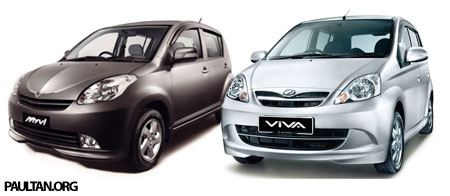Small car that comes with many advantages and some disadvantages that may arise in both vehicle performance and a practical and safe to drive. Most major auto-makers have several products in the smaller car or a compact fit. Indeed, there is a huge potential market drivers, who appreciate the ability to drive a small car.
With the growing interest in hybrid vehicles and driving more fuel-efficient small cars has grown popular. Small cars tend to require less fuel and energy costs, use the engine and they are generally less, so they check the green box and cheaper to run. Simple cars and motorsport fans among those who often have little interest in the trip.
The advantages of a small car
Among the advantages of driving a small car, fuel consumption will be one of the most important.
Handling is very important to many people. Smaller vehicles are easier to move and out of traffic and are easier to park in a crowded parking lot. It's a stress reliever for people with a great big vehicles, it can be difficult to find parking spaces shall be entitled to attend the event or go shopping.
Often, small vehicles have a better ability to quickly find the vehicle speed or any other program that heavier cars. This can be an advantage when driving on the highway.
Another great advantage of driving a small car it may be easier to maintain. Sage, you have less space inside and outside the vehicle, the less you need to manage and maintain cleanliness. The cost for parts repair and replacement services can get your car may also be less.
Naturally, small cars are not for everyone. People with a family of transport need more space offered by a van or SUV. You need to move equipment or other property on the front and the back can also be found in a room in a small car is not enough. In terms of security, many small cars, the safety features are good, but can sometimes be intimidating to share the road with large vehicles. In accidents, small cars that you can never win against a big car.
Car insurance is another issue that may be affected by the size of the car. The value of the vehicle, engine, size and cost of parts to repair affect your insurance premium. Although there are smaller vehicles that are equipped with higher insurance premiums, how sweet sports car to come, many smaller cars generally cheaper to insure. It's a good idea to review your auto insurance premium by buying a model car - perhaps with a comparison site for car insurance.
In summary, remember these factors are important in determining whether small cars are for you:
The importance of a small car in the parking and traffic.
The level of maintenance you are willing, in your car.
For the fuel consumption of vehicles.
Comfort, you drive a small car on a busy street.
Number of auto insurance premiums for vehicles that are smaller than a larger vehicle may be considered.
The small car with many benefits and some potential weaknesses, both as a performance vehicle and a convenient and secure future to drive. Most major automakers have some products entering the market for small cars and compact. It is certainly a huge potential market for drivers who want the ability to drive a smaller vehicle to estimate the size.







